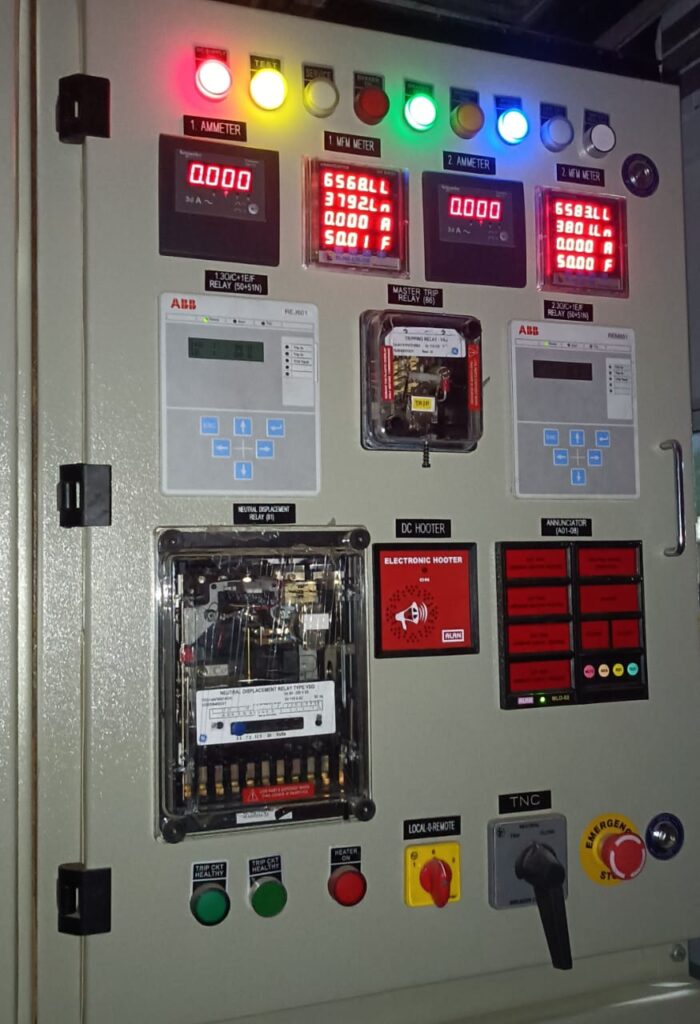The Master Trip Relay, also known as the Lockout Relay (ANSI 86), is a vital component in electrical protection and control systems. It is primarily used to ensure the coordinated tripping of circuit breakers in response to fault conditions. Though it does not sense the fault directly, it receives tripping signals from multiple protection devices such as overcurrent relays, differential relays, earth fault relays, etc., and initiates the final tripping operation.
1. Purpose and Functionality:
– The Master Trip Relay acts as an interfacing relay between protection relays and the circuit breaker trip coil.
– When any of the protection relays detect a fault and send a trip signal, the Master Trip Relay locks in and activates its contacts to trip the relevant circuit breaker(s).
– It ensures that only one strong, isolated output triggers the breaker, regardless of which protection relay sensed the fault.
2. Key Benefits and Importance:
a) Protection of Protection Relays:
– It isolates sensitive protection relays from the breaker’s trip circuit.
– In case of a short circuit or problem in the trip coil circuit, the Master Trip Relay absorbs the impact, protecting critical relays from damage.
b) Centralized Tripping Logic:
– All fault conditions feed into one master relay.
– This provides a centralized tripping logic, avoiding the need to individually wire each protection relay to the breaker trip coil.
c) Multiple Output Contacts:
– The relay typically has multiple auxiliary contacts that can be used to:
– Trip multiple breakers.
– Activate alarms or annunciations.
– Trigger interlocks.
– Send signals to SCADA or DCS.
d) Fail-Safe Operation:
– The relay design ensures that even in severe fault scenarios, the tripping operation is carried out reliably.
– It often has mechanical latching, which keeps the relay in the tripped position until reset.
3. Types of Reset:
Hand Reset (Manual):
Requiring an operator to physically acknowledge the trip and reset the system. This ensures the cause of the trip is investigated before restarting.
Self-Reset (Auto):
Some advanced relays may reset automatically once the fault is cleared.
Real-Time Example:
In a 132kV substation, protection relays like distance relay, differential relay, and overcurrent relay all give trip signals to one master trip relay (86). This relay then trips the breaker and locks in the tripped state, ensuring a reliable and fail-safe disconnection of the faulty section.
Conclusion:-
The Master Trip Relay ensures safe, reliable, and centralized tripping of electrical systems during fault conditions. It safeguards the entire protection system, reduces wiring complexity, and helps maintain system integrity. Its role is critical in power plants, substations, and industrial switchgear panels, where fast and coordinated fault clearing is essential.

